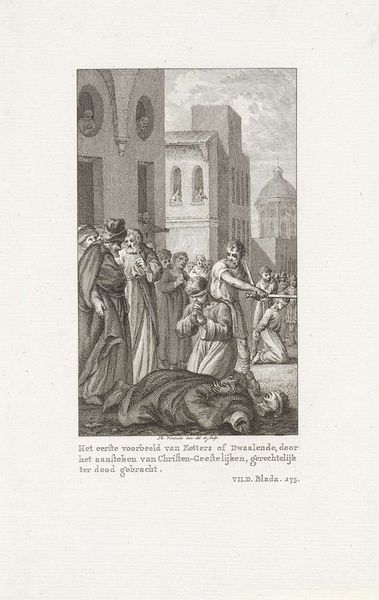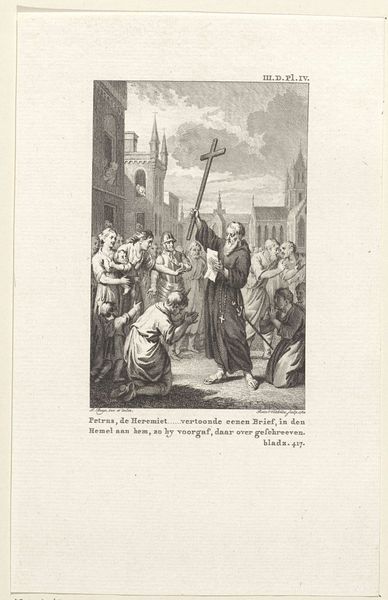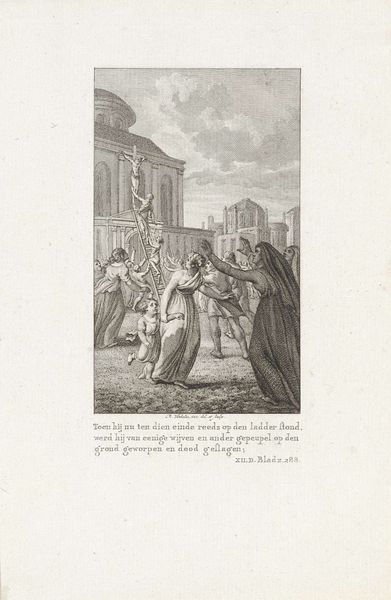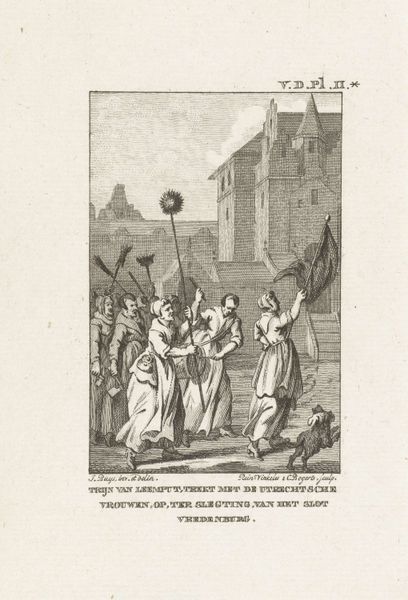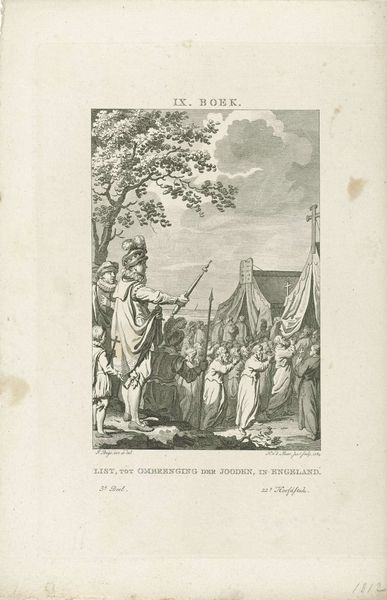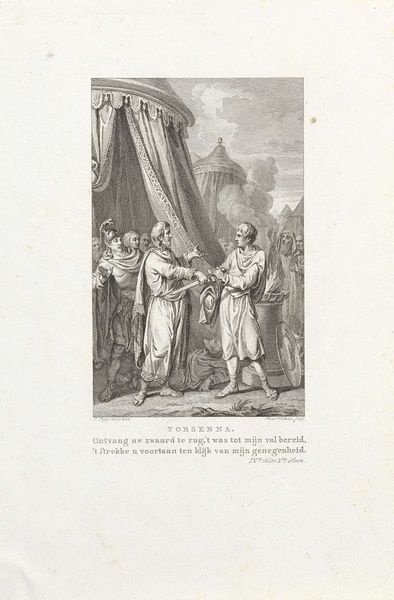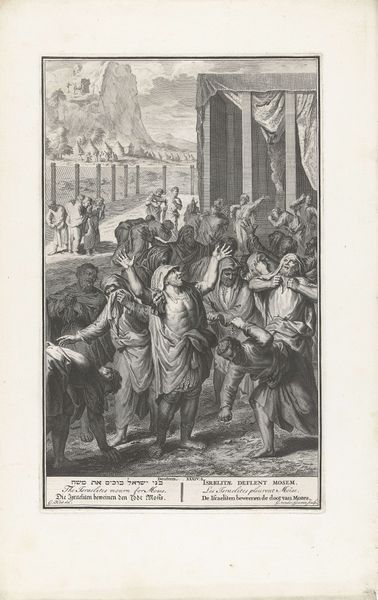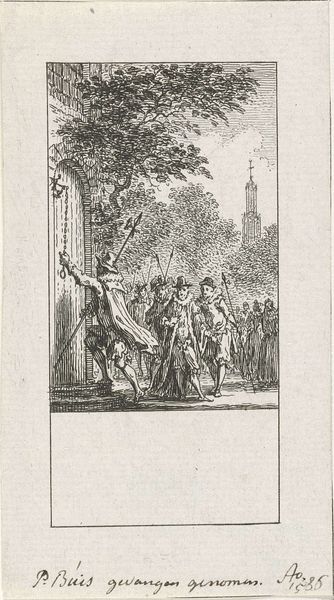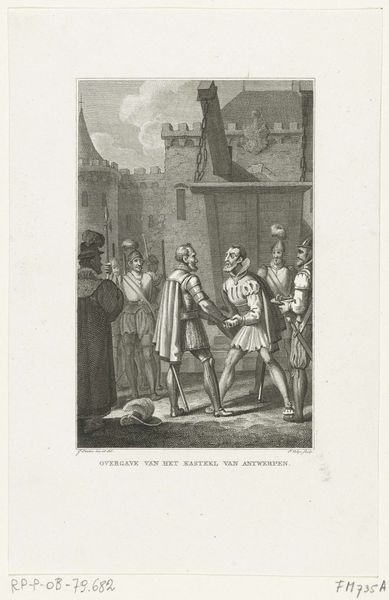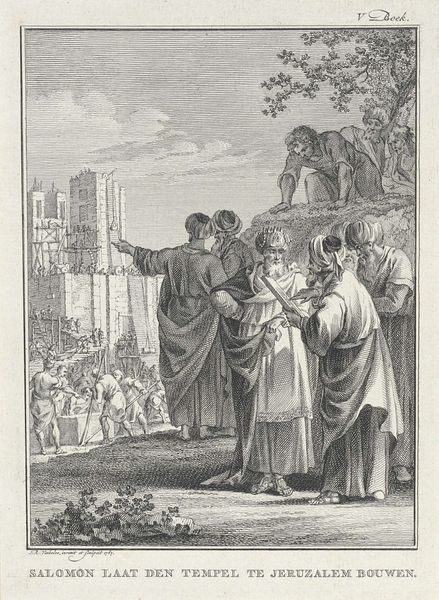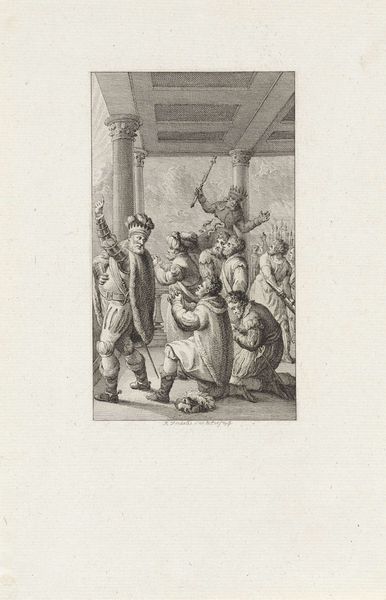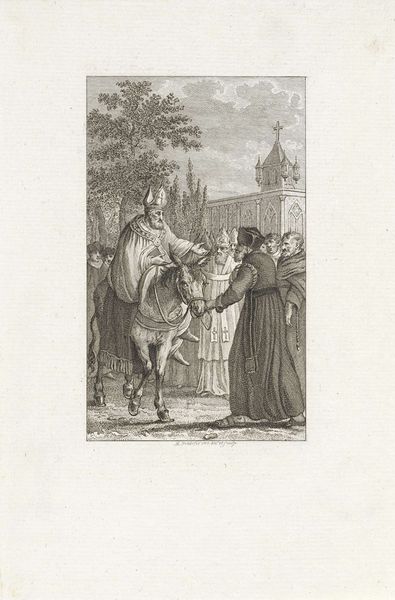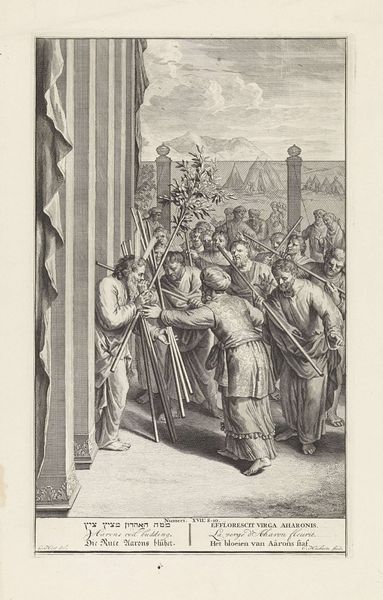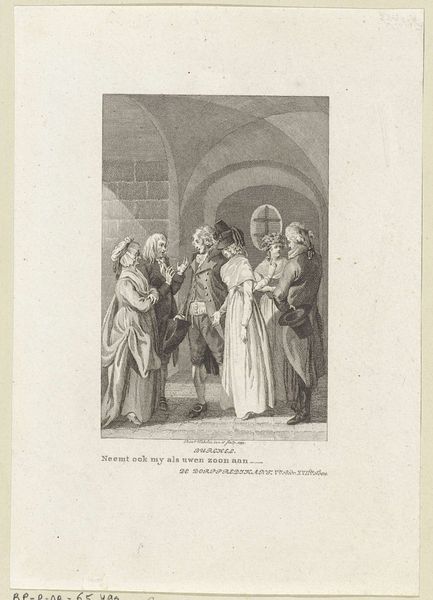
engraving
#
neoclacissism
#
figuration
#
history-painting
#
engraving
Dimensions: height 240 mm, width 161 mm
Copyright: Rijks Museum: Open Domain
Editor: This engraving by Reinier Vinkeles, made around 1801, is called "Simeon berispt zijn oude vriend Usthazades.” That’s quite a mouthful! The starkness of the black and white medium really brings out the drama of the scene, a stern lecture, it seems. What’s your take on it? Curator: Ah, yes, it’s a fascinating little scene. Think of it less as a simple telling-off and more as a pivotal moment of moral reckoning, a test of loyalties etched in ink! See how Simeon’s hand is raised? It’s not just scolding; it's almost theatrical, demanding Usthazades to truly *see* the error of his ways. Have you noticed how Usthazades kneels, a posture steeped in submission but with an averted gaze, a detail suggesting inner conflict? The other figures function as a chorus, witnessing this confrontation of conscience, the architecture acting almost as another character bearing witness. Editor: That makes so much more sense. I just thought he was in trouble! So the kneeling and the averted gaze… that adds layers of complexity to the story. Curator: Absolutely. And in engravings, what isn't included can be just as powerful as what is. The limited grayscale intensifies the stark contrast between right and wrong, emphasizing the severity of the situation. It’s as if Vinkeles is inviting us to judge alongside Simeon, demanding we confront our own moral compass. And the choice of an engraving? Almost like truth being chiseled in stone, right? Editor: Right. Seeing it that way… I won't look at engravings the same way again. Curator: And that’s the magic of looking, isn't it? Every viewing allows an object to unfold and surprise, even an unassuming engraving.
Comments
No comments
Be the first to comment and join the conversation on the ultimate creative platform.
